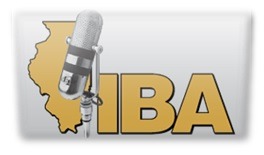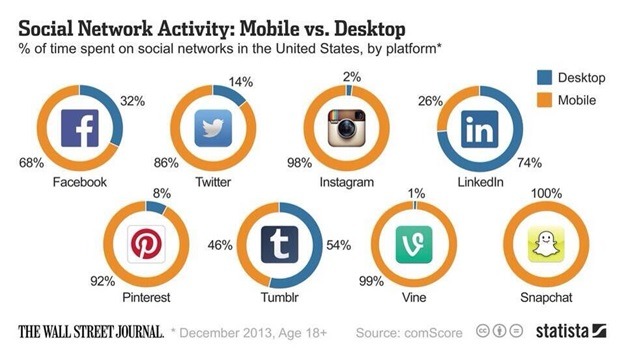 Last week, I was honored to present at the Illinois Broadcasters Association conference, held this year in Champaign. This is another great state broadcaster get-together, featuring hundreds of motivated radio and TV pros, eager to learn from each other.
Last week, I was honored to present at the Illinois Broadcasters Association conference, held this year in Champaign. This is another great state broadcaster get-together, featuring hundreds of motivated radio and TV pros, eager to learn from each other.
It’s a proud organization, and rightfully so. During this year’s Broadcaster of the Year luncheon, the legendary W. Russell Withers, Jr. was posthumously honored (he passed away back in January), while Emily Barr who now heads up Post/Newsweek’s television stations (but previously ran WLS-TV for many years) earned the Vincent T. Wasilewski award from the IBA.
The conference also featured Illinois basketball coach, John Groce, who delivered a fired up pep talk about management and leadership. I attended other sessions, but especially enjoyed a smart social media panel that was on the agenda.
And that’s the focus of this post, because the opening question in that session asked the panelists whether digital is social media. Savvy Erica Pefferman handled the obvious differences deftly and wisely, but I sensed that many in the room were still a bit confused about where digital ends and social begins.
But perhaps the inflection point of any social media activity – or SO – ought to center around the MO part of the equation – or mobile.
That’s because social media interaction – on just about every platform – is now powered by consumers’ mobile devices. It didn’t used to be that way. When you first opened up a Facebook or Twitter account, chances are you did most of the heavy posting and tweeting from the comfort of a desktop or laptop computer.
Not anymore. Here’s a compelling chart that appeared in The Wall Street Journal, put together by Statista, that features comScore data, showing how the shift to mobile has now defined social media usage:
With the exception of Tumblr and LinkedIn, every other comScore measured social media platform is now being dominated by mobile usage. And of course, this chart is among Adults 18+. You can only imagine how the mobile percentages would increase for all of these social networks with the addition of teens.
And for radio, this underscores the 800 pound gorilla that now resides in every station in the country – the need for a mobile strategy that seamlessly integrates social sharing and app functionality. Because apps that merely stream and/or make it difficult to share content socially are missing the big opportunity that now defines the confluence of mobile and social.
While radio is under pressure to develop social plans that are smart, strategic, and doable, the mobile marketing and brand-building potential has never been greater for stations and personalities. More and more, consumers love to share interesting and compelling content – pictures, discoveries, videos, and stories that resonate. And overwhelmingly, they’re doing on their mobile devices.
Unifying the power of SO and MO is at the heart of radio growing and nurturing its relationships with its audiences – making it possible to create engagement and emotional bonds with consumers that simply don’t happen with pure-plays or satellite radio.
The most important consumers to radio are walking around with the most powerful social sharing devices every created – their smartphones – with the ability to capture that real-time moment and share it fluidly with everyone in their personal networks.
And let’s keep in mind, it’s not just about iPhones, Galaxy S4s, and apps. PDs and on-air talent must utilize the power of SOMO in programming, promotions, events, and the everyday discourse that occurs between the station and the audience. Just having the tools is one thing – using them to truly share and spread the message and the conversation is at the heart of this big opportunity.
The faster broadcast radio gets there, the better.
Thanks to Dennis Lyle, Debra Gray, Jerry Schnacke, and Drew Horowitz for having me back for the IBA conference.
- Media And Technology In 2025: Believe It Or Not! - April 18, 2025
- In Radio, You Just Never Know - April 17, 2025
- The Secret To Making A Great Podcast (And Great Radio) - April 16, 2025





The problem for many groups is systemic. A year working for a syndicator was very instructive for me. I found out that one of radio’s biggest groups has a policy that local stations cannot add so much as a link to their website without approval from a high level exec in NY who has never worked at a radio station. How can individual brands be expected to maximize SOMO under that kind of counter-productive restriction? And while that isn’t the norm, all kinds of restrictions exist that reflect a serious level of out of touch disconnect. The logic leap to a sound mobile strategy seems awfully far fetched in this kind of atmosphere.
Radio’s leaders should either get on the SOMO train personally or turn it over to people who already are. Then I’ll bet the phones would blow up with radio stuff…
It wasn’t that long ago that a major broadcaster wouldn’t let ANY employee long onto Facebook (or other social networks) from the company ISP. In retrospect, totally crazy, right?
Old habits, restrictions, and top-down policies die hard. Given the fluid nature of tech, it’s in everyone’s best interests to be open-minded about these platforms and how they’re used. Of course, the aforementioned company didn’t have a digital director at the time, another mitigating factor.
Thanks for the heads up, Bob.